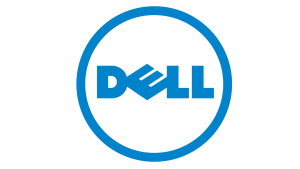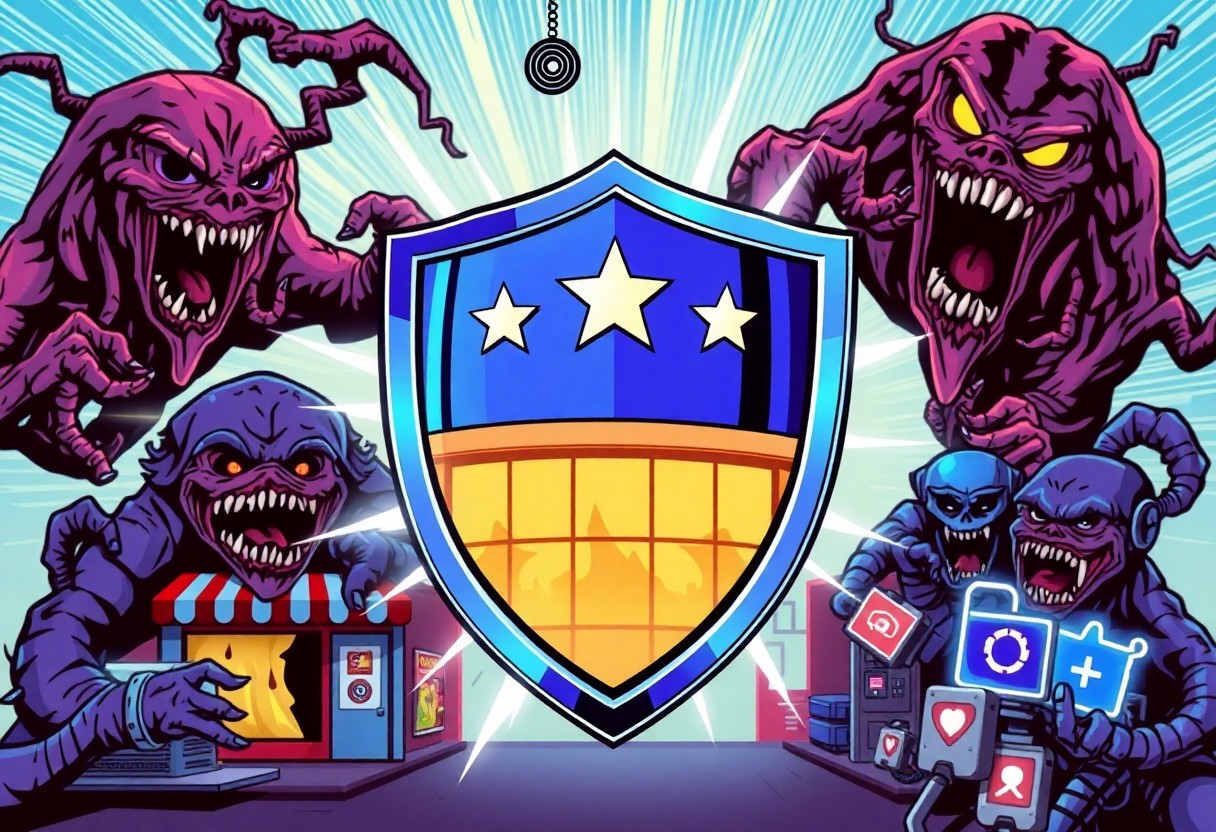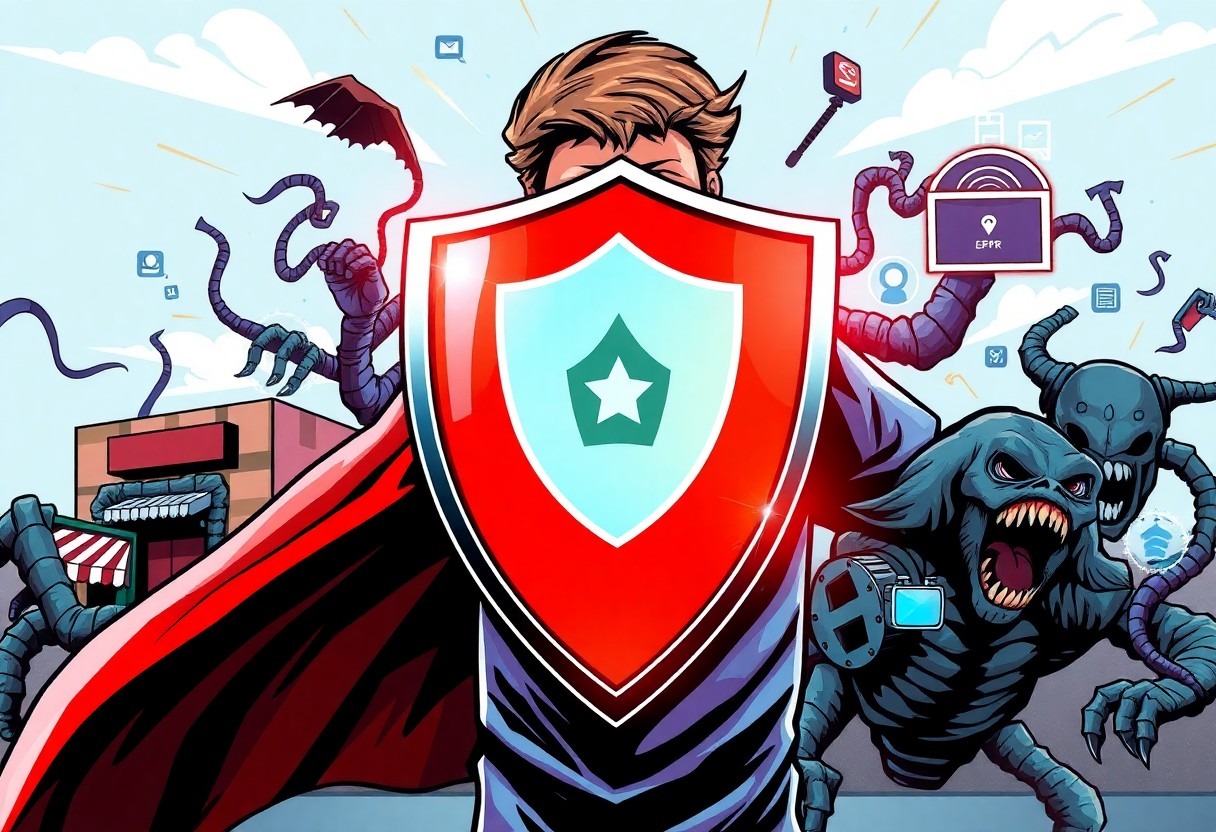Top 10 Cybersecurity Threats Facing Small Businesses This Year (And How to Stop Them)
Cybersecurity is more important than ever for your small business as the digital landscape becomes increasingly hostile. In this blog post, we’ll explore the top 10 cybersecurity threats that could jeopardize your operations in the coming year. From ransomware attacks to phishing scams, these growing challenges demand your immediate attention. By understanding these threats and implementing effective strategies, you can significantly enhance your security posture, ensuring that your business remains resilient against malicious attempts. Let’s examine how you can protect your valuable assets and maintain peace of mind.
Key Takeaways:
- Small businesses are increasingly targeted by ransomware attacks, making regular data backups and employee training on phishing prevention necessary for protection.
- Insider threats, whether intentional or unintentional, can pose significant risks; implementing strict access controls and monitoring user activity can mitigate these risks.
- Utilizing multi-factor authentication and keeping software up to date are fundamental steps that small businesses can take to enhance their cybersecurity posture effectively.
The Ransomware Revolution: How Small Businesses Become Targets
In today’s digital landscape, ransomware attacks have evolved into one of the most pressing cybersecurity threats for small businesses. Criminals are increasingly turning their attention toward smaller enterprises, often believing that they are less likely to have robust cybersecurity measures in place. With attackers understanding that many small businesses lack the necessary resources to recover from such incidents, they consider these organizations easy prey. You might think, “This won’t happen to me,” but as the statistics reveal, ransomware is a threat that could significantly disrupt your operations and lead to severe financial strain.
Statistics That Alarm
The alarming rise in ransomware attacks against small businesses is well-documented. In the last year, nearly 43% of cyberattacks targeted small and medium-sized businesses, and this number continues to rise as hackers become more sophisticated. Additionally, more than 70% of businesses that experience a ransomware attack end up paying the ransom, often because they feel they have no other option. These stats underscore the vulnerability that many small businesses face in an increasingly hostile cyber environment.
The Financial Fallout
The fallout from a ransomware attack is not just immediate; it can have lasting effects on your business. The average cost of a ransomware attack can be staggering, ranging from $100,000 to over $1 million depending on the scale and data involved. This financial toll doesn’t only encompass the ransom payment but also the costs associated with downtime, data recovery, and potential reputational damage. For small business owners like you, these expenses can be catastrophic, leading to long-term challenges like decreased customer trust and loss of revenue streams.
Moreover, the financial implications extend beyond the attack itself. Investing in recovery processes, reinforcing security infrastructure, and even potential legal fees can further strain your budget. When a significant portion of your resources is funneled into managing the fallout from a ransomware attack, it can impede your ability to grow and innovate, showcasing just how necessary it is to prioritize cybersecurity measures before an incident occurs.
Phishing Ploys: Deceptive Tactics that Hook Employees
In today’s digital age, small businesses are increasingly becoming targets of phishing attacks, where cybercriminals use deceptive tactics to trick employees into revealing sensitive information. These attacks often come in the form of emails or messages that seem legitimate but are designed to steal private data such as login credentials, client information, or financial details. By understanding how these threats manifest, you can better protect yourself and your organization from potential breaches that can lead to disastrous consequences.
Phishing ploys can be sophisticated, making it crucial to equip your team with the knowledge to identify them. By promoting vigilance, you strengthen your business’s defenses against these attacks. In this section, we will explore how to recognize alarming signs of phishing attempts and build a resilient culture of awareness among your employees, ensuring they are first responders against such tactics.
Recognizing the Red Flags
Spotting the signs of a phishing attempt can mean the difference between safety and a security breach. Look out for unexpected emails that prompt immediate action, especially those requesting personal information or financial details. Frequent red flags include poor grammar, unfamiliar sender addresses, or generic greetings like “Dear Customer.” If an email seems out of character for your usual business communications, it’s wise to question its authenticity.
Additionally, verify any links by hovering over them before clicking, as they may lead to malicious websites disguised as legitimate ones. Encourage your team to triple-check any requests for sensitive information, especially if they come from a source they don’t recognize. By teaching your employees to remain skeptical about unsolicited messages and direct communication, you enhance your organization’s overall cybersecurity posture.
Creating a Culture of Awareness
Building a strong culture of cybersecurity awareness is crucial for protecting your small business from phishing attacks. Conduct regular training sessions to educate your employees about various phishing tactics and the importance of being cautious when handling emails and messages. Make cybersecurity a part of your work culture, where discussing potential threats is encouraged, and employees feel comfortable reporting suspicious activities without fear of judgment.
Offering practical examples and engaging training resources, such as quizzes or interactive workshops, can help reinforce the key messages. Create a system for reporting suspicious emails, and reward employees who actively participate in safeguarding the organization’s information. Maintaining open lines of communication fosters an environment where awareness and vigilance thrive, making it harder for attackers to succeed.
Weak Passwords: The Silent Saboteur
In cybersecurity, weak passwords often act as the silent saboteurs that undermine even the best defense mechanisms. Small businesses frequently fall into the trap of using easily guessable passwords, such as “123456” or “password,” exposing their sensitive data to potential breaches. Cybercriminals leverage automated tools to crack these weak credentials within seconds, putting your organization at significant risk of data theft and financial loss. As a small business owner, your digital identity is valuable, and ensuring robust password security is not just an option but a necessity.
The Cost of Weak Credentials
The financial implications of weak passwords can be devastating. A successful breach can lead to direct costs like regulatory fines, loss of customer trust, and the expenses associated with remediation efforts. The total cost of a data breach can easily escalate into the millions, especially when considering business downtime and lost revenue. In addition to immediate financial repercussions, weak passwords can tarnish your brand’s reputation and make it harder to regain customer confidence once lost.
Best Practices for Password Management
To combat vulnerabilities tied to weak passwords, implementing robust password management practices is important. You should encourage employees to use a combination of upper and lower case letters, numbers, and special characters in their passwords. Implementing a policy that mandates password changes every three to six months can help maintain security and deter unauthorized access. Moreover, leveraging password managers to generate and store complex passwords can greatly reduce the temptation of reusing them across various accounts.
Educating your team about the signs of phishing attacks and other social engineering tactics is equally important. Reinforce the notion that no password is impervious, and they should be wary of unsolicited requests for login information. Additionally, consider enabling multi-factor authentication (MFA) wherever possible, as this adds another layer of protection, requiring users to provide more than just a password to access their accounts. By prioritizing these best practices, you significantly reduce the risk of a cybersecurity breach linked to weak passwords.
Unsecured Networks: A Gateway for Attackers
In today’s digital landscape, unsecured networks pose a significant threat to small businesses. Attackers can easily exploit weak or open connections to gain unauthorized access to sensitive data, slow down operations, or even manipulate your systems. This vulnerability is particularly pronounced when employees connect to public Wi-Fi networks, which are notoriously insecure and often serve as a prime target for cybercriminals. If your business relies on remote work or on-the-go connectivity, understanding the risks associated with these unsecured networks is vital.
Evaluating Risks in Remote Work
With the rise of remote work, evaluating the risks associated with your team accessing business resources from various locations is more important than ever. You should assess the types of networks your employees are using, particularly if they often connect from coffee shops, libraries, or other public venues. Each of these locations could potentially open a door for attackers to breach your business’s defenses, making employee training on network safety crucial.
Furthermore, consider the nature of the data your employees handle remotely. If they are managing sensitive customer information or operating financial systems, the risks are amplified. You need to implement policies that not only raise awareness about the dangers of unsecured networks but also provide clear guidelines on how to mitigate these risks effectively.
Securing Your Wi-Fi and VPN Connections
Securing your Wi-Fi and VPN connections is a fundamental step in protecting your business from cyber threats. Begin by ensuring that your Wi-Fi networks are password-protected and utilize strong encryption protocols, such as WPA3. This will significantly reduce the likelihood of unauthorized access. Additionally, consider implementing a virtual private network (VPN) for employees when they are working remotely. A VPN creates a secure, encrypted tunnel for data transmission, making it far more difficult for hackers to intercept sensitive information.
In addition to the basic security measures, regularly update your router’s firmware to patch any known vulnerabilities, and change your Wi-Fi password periodically. Enforcing a strict policy regarding the use of VPNs will also provide an added layer of security. It’s crucial to educate your employees about how to connect these tools correctly and the importance of using them consistently whenever they access the internet for work purposes.
Insider Threats: The Hidden Danger Within
Insider threats can be particularly challenging for small businesses. Unlike external cyber threats, which are sometimes easier to detect and defend against, insider threats come from individuals who are already part of your organization. These individuals could be employees, contractors, or partners, and they may have legitimate access to your systems, making their actions difficult to identify until it’s too late. Whether it’s a disgruntled employee seeking revenge, or an unintentional mistake caused by lack of training, these risks represent a significant concern for you as a business owner.
By recognizing and addressing these risks, you can better protect your organization from the dangers that lie within. Insider threats can lead to data breaches, financial loss, and damage to your reputation. You should evaluate your organization’s culture, practices, and technology use to mitigate these risks and promote a secure working environment.
Identifying Risk Factors
To effectively combat insider threats, you need to start with identifying risk factors that may contribute to potential issues. Since insider threats can stem from a variety of motives, it’s important to focus on elements that heighten the likelihood of such occurrences. Consider the following factors:
- Employee turnover rates – High turnover can create instability in your organization.
- Access to sensitive information – Evaluate which employees have access to critical data.
- Workplace culture – A toxic culture can foster resentment and sabotage.
- Lack of training – Employees who are not well-informed may inadvertently create vulnerabilities.
By focusing on these risk factors, you can strengthen your defenses. Thou shalt not underestimate the importance of understanding and addressing these potential vulnerabilities in your operations.
Implementing Access Controls and Monitoring
One of the most effective strategies for mitigating insider threats is to implement robust access controls and continuous monitoring of activities within your organization. This means carefully defining who has access to what levels of information and ensuring that privileges are aligned with roles. You should regularly review access permissions and make adjustments as needed. Additionally, employee activity should be monitored through logging and auditing tools, which can help you spot unusual behavior or unauthorized access attempts early on.
When you establish effective access controls, you create a barrier that can significantly reduce the risk of insider threats. By monitoring employee actions daily, any suspicious activities can be flagged and addressed before they lead to substantial harm. You not only enhance security but also foster a culture of accountability among your team members, as they will understand that their actions are being observed. Thou shalt ensure that access controls and monitoring systems remain updated, as the cybersecurity landscape is constantly evolving, and keeping pace is vital to your safety.
Outdated Software: A Lethal Vulnerability
In today’s digital landscape, outdated software poses an alarming threat to small businesses. When applications or operating systems are not regularly updated, they can become prime targets for cybercriminals. Attackers often exploit known vulnerabilities in older software versions, leading to data breaches, malware infections, and potentially devastating financial losses. You must ensure that your software is current to safeguard against these risks, as even a single out-of-date program can create a breach point into your entire system.
The Importance of Regular Updates
Regular updates are vital to maintaining the security and functionality of your software. Each update typically includes patches designed to fix vulnerabilities and improve performance. By neglecting updates, you not only expose your business to potential threats but also endanger your clients’ sensitive information. Keeping your software current is an easy yet powerful step you can take to fortify your defenses and create a safer environment for your operations.
Strategies for Effective Patch Management
Establishing a robust patch management strategy is vital for ensuring your software remains secure. Begin by creating an inventory of all software applications in use within your organization, making it easier for you to track which programs require updates. Automate the update process where possible, as this minimizes the risk of human error and ensures that patches are applied promptly. It’s also advisable to regularly train your staff on the significance of updates, fostering a culture of cybersecurity awareness and compliance.
In addition to automation and staff training, connecting with reliable sources or subscribing to security bulletins can significantly enhance your patch management process. These resources keep you informed about the latest vulnerabilities and their corresponding fixes, allowing you to act swiftly to address any threats. By prioritizing effective patch management, you not only mitigate risks posed by outdated software but also bolster your organization’s overall cybersecurity posture.
Conclusion
With this in mind, it’s imperative to recognize that the digital landscape is continually evolving, and small businesses are increasingly becoming prime targets for cybercriminals. By staying informed about the top threats, such as phishing, ransomware, and insider threats, you can better prepare your business to mitigate risks. Implementing robust cybersecurity measures like employee training, strong password policies, and regular software updates will significantly enhance your defenses and protect your sensitive data from potential breaches.
Moreover, don’t underestimate the importance of incident response plans and cybersecurity insurance as part of your overall strategy. These additional layers of protection can not only minimize damage in the event of a cyberattack but also empower you with the tools and resources to recover swiftly. Taking proactive steps now will not only safeguard your business but also build trust with your customers, reinforcing your reputation in a competitive market.
Q: What are the top cyber threats small businesses should be aware of this year?
A: Small businesses face various cyber threats, including phishing attacks, ransomware, insider threats, and data breaches. This year, specific focus has been on supply chain attacks, where hackers exploit vulnerabilities in third-party software, as well as social engineering tactics that manipulate employees into divulging sensitive information. Additionally, the rise of remote work has made businesses more susceptible to insecure home networks and endpoint vulnerabilities.
Q: How can small businesses protect themselves from ransomware attacks?
A: To defend against ransomware, small businesses should implement a multi-layered security approach. This includes regularly backing up all critical data and ensuring those backups are stored securely and disconnected from the main network. Training employees to recognize phishing emails is important as these are common entry points for ransomware. Furthermore, businesses should invest in robust antivirus and anti-malware software, keep all systems updated, and utilize firewalls to mitigate potential risks.
Q: What steps can businesses take to safeguard sensitive data from breaches?
A: Small businesses can adopt several practices to ensure the security of sensitive data. First, they should conduct a thorough risk assessment to identify vulnerabilities in their systems. Implementing strong password policies, utilizing encryption for sensitive data, and controlling access based on job roles are vital steps. Additionally, employees should be educated about the importance of data security and trained on the best practices for handling sensitive information. Regular security audits can also help identify areas for improvement and ensure compliance with data protection regulations.







